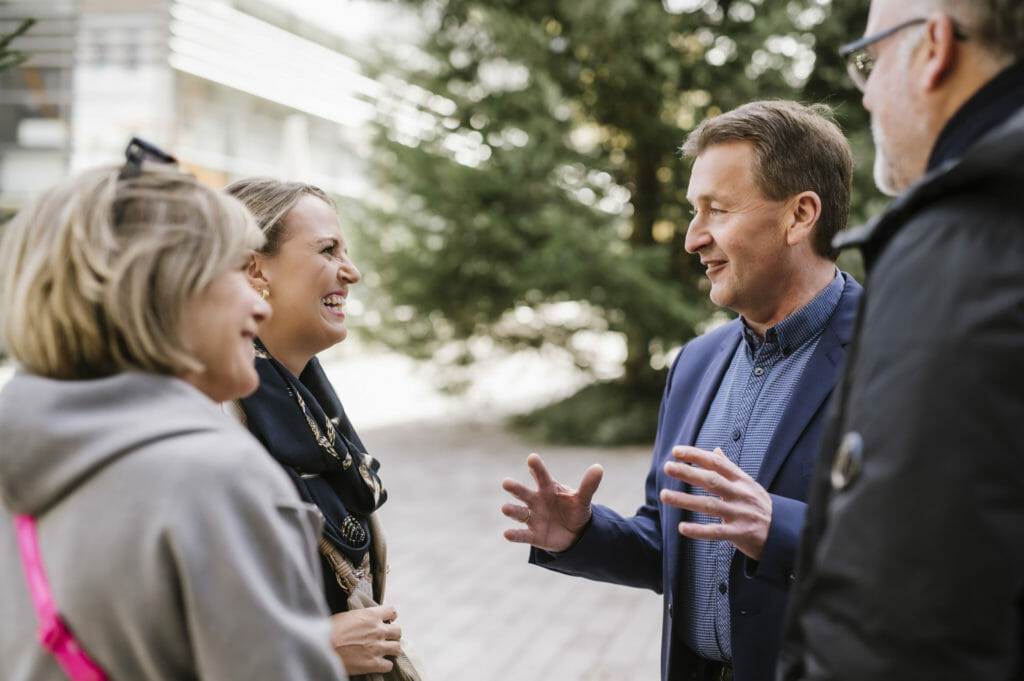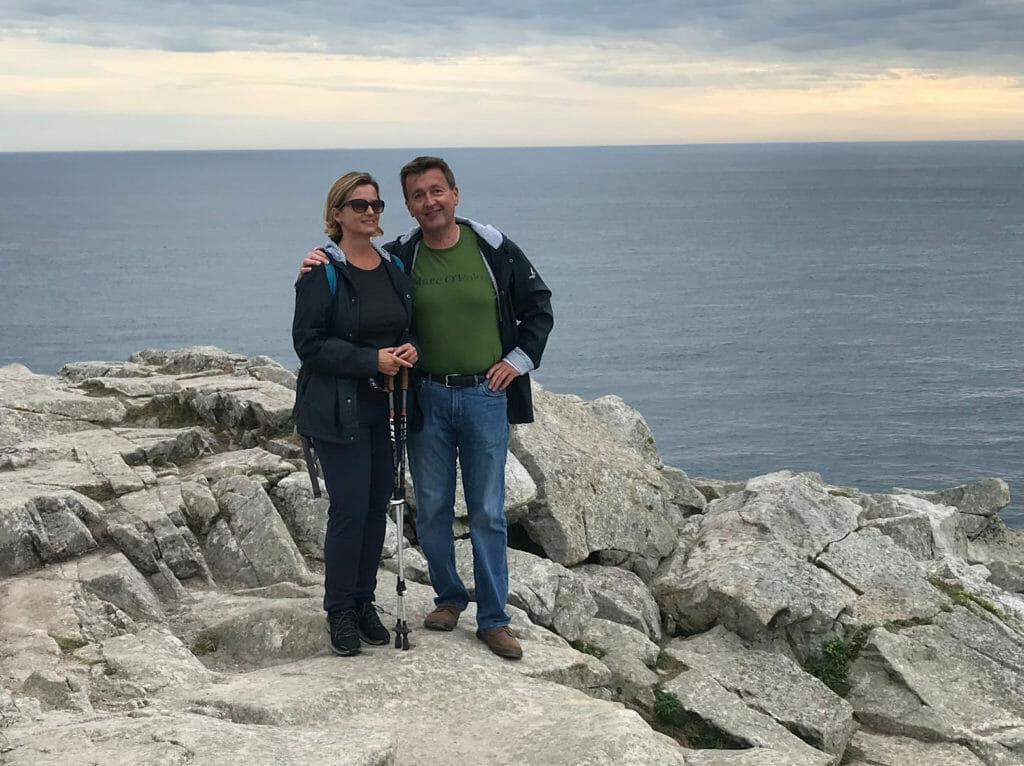Albstadt is the largest city in the region, but nevertheless also a “rural area”. As an area city with 9 districts, we need good local public transport, but at the same time individual transport within the individual districts, between the districts and beyond will continue to play a major role in the future. Both are equally important and must complement each other.
Overall transport concept that connects the different transport options
It is therefore wrong to observe in recent years in local politics that representatives of the “car faction” on the one hand and “promoters of public transport” on the other have clashed, sometimes irreconcilably. A transport concept for the future must take all concerns into account. This is especially true when taking into account the different usage habits and needs of commuters, private individuals, all generations and all social classes. So we need an overall transportation concept in the city that connects the different transportation options.
Functioning network of cycle paths
Therefore, further development of a safe, comprehensive network of cycle paths connecting the city districts is required, now that the bicycle as a means of transport is also gaining in importance. This does not mean, however, that individual transport by car should be seen as a competitor to this – cooperation, rather than competition, is necessary in terms of transport space. This coexistence must result in the smoothest possible flow of traffic in the city. This includes refraining from unnecessary restrictions on the flow of traffic in the city, just as it is necessary to monitor compliance with traffic rules. Also from the point of view of personnel costs, in the future it will be a matter of relying more on automatic systems (mobile measuring devices) for monitoring traffic. However, this is done primarily at actual traffic hazard locations, but explicitly not to increase revenue for the city treasury.
Sufficient charging stations
There is political will to promote electromobility for cars as well. However, the consequence of this is that a sufficient number of public charging stations are also required in the urban area. It is therefore also the task of the city, together with the Albstadtwerke, to ensure that the transition to electromobility is promoted by providing sufficient charging stations – especially fast charging stations.
Implementation of parking guidance concept Ebingen
An orderly flow of traffic within the city also requires sufficient parking space for vehicles. Here, too, ideological barriers must be overcome: Providing sufficient parking space – especially in the city centers of the larger districts – does not necessarily have to stand in the way of promoting local public transport and/or bicycle use, nor does it have to stand in the way of safe pedestrian traffic. Here, too, barriers to thinking must be broken down. Functioning trade and services in the city centers will continue to depend on the availability of sufficient parking spaces that are close to the center and easily accessible. What is needed accordingly is the provision of sufficient parking space – in the city centers for residents as well as for short-term parkers. The “parking guidance concept Ebingen” with intelligent traffic guidance, which has been announced for many years by the administration “at short notice”, must therefore finally be implemented now and must not be delayed any further. However, this also includes considering whether the partially unused capacities of parking spaces, for example in the Bahnhof parking garage, should not be increasingly occupied by introducing a new system of parking fees. Sensible parking management, also in the interest of downtown retail, must not shy away from charging appropriate parking fees – the closer to the center, the more graduated. However, it is crucial that sufficient parking space is also available for visitors, as well as for residents. On the one hand, the existing residents’ parking zones must be checked, and on the other hand, they may have to be expanded. Above all, it is critical to provide sufficient parking outside of resident and visitor parking for those who commute to work downtown by car.
Supra-local transport links
A sustainable traffic concept can only be based on the fact that the supra-local traffic connection of the city of Albstadt also becomes sustainable. For the road sector, it will therefore be necessary to finally press ahead quickly with the planned Lautlingen bypass, also to relieve the pressure on the Lautlingen center. A deviation from the route now in planning entails the risk that the project – especially in times of empty coffers – will be postponed until never-never. This must not happen in the interest of Lautlingen, as well as the city as a whole. Against this background, planning must be accelerated, but must take into account all currently conceivable aspects of environmental protection and nature conservation. It must be examined to what extent greening measures and noise protection can further contribute to keeping the ultimately necessary interventions in the landscape as minimal as possible.
Connection by rail
A decisive issue for the future viability of the city is also the connection of Albstadt by rail:
In a short cycle to the Talgangbahn
The municipal council, together with the city administration, has decided on the principle of the reopening of the Talgangbahn. In the detailed planning of this route between Ebingen and Onstmettingen, it is now important to maintain consistent citizen participation and to take seriously the concerns of all those who are affected by the routing of the valley railroad and to incorporate them into the further planning. This applies to the stopping points as well as to the design of intersections and other measures. In addition, care must be taken at an early stage to ensure that the stopping points of the future Talgangbahn can also be reached by local public transport from the slopes of the Talgang easily, at short intervals and without special effort. There must be no prohibitions on thinking about this. For the future, it should also be considered to use electric buses, on-call buses and/or self-driving vehicles here as a pilot project, for example. It requires imagination and, if necessary, consultation with industrial companies to bring Albstadt forward technologically here.
Electrification of the line to Stuttgart
The Talgangbahn will be fully effective when the even more important project for the city as a whole is implemented in the foreseeable future: The electrification of the train line from Tübingen to Albstadt and beyond to Sigmaringen. When Stuttgart 21 goes into operation, only electric locomotives will be able to enter Stuttgart’s main station. If the Zollernalbkreis and the city of Albstadt do not want to be “left behind” by the necessary changeover in Tübingen, the major project “electrification of the railroad line”, also together with the district of Sigmaringen, must be pushed forward with the greatest vigor at all political levels. For the future development of train traffic, this is not only desirable, but the central point of departure. With electrification, the benefits and thus also the acceptance of the Talgangbahn reach the maximum: transfer-free from Onstmettingen to Stuttgart and back, in addition to the serious improvement of our inner-city traffic.







